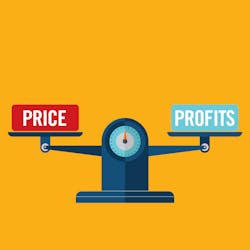Sam Walton, who started Walmart in Bentonville, AR, in the late 1940s, grew his variety store in a small Arkansas town into the world’s largest retailer by doing things his competitors said would not work. Instead of selling his goods at traditional high profit margins, he believed he could get more customers into his store by offering the same brand name products at lower prices and superior customer services.
When I first got started in the vending industry in 1994, I was told that in order to make a profit in vending, you had to sell everything at a very high gross profit margin. I was also led to believe that you pretty much had a captive audience where a customer came to your machine and they would have to pay your price. It did not take me long to figure out that was not always the case, to say the least.
I submit the following quotes from Sam Walton about operating a successful business and how they could be relevant to the vending industry
Go against the norm
Sam said, “Swim upstream. Go the other way. Ignore the conventional wisdom. If everybody else is doing it one way, there’s a good chance you can find your niche by going in exactly the opposite direction. But be prepared for a lot of folks to wave you down and tell you you’re headed the wrong way.”
In his book “Made In America,” he said the following when talking about percentages: “What happened was that they [Walmart’s competitors] didn’t really commit to discounting. They held on to their old variety store concepts too long. They were so accustomed to getting their 45 percent markup, they never let go. It was hard for them to take a blouse they’d been selling for $8.00 and sell it for $5.00, and only make 30 percent. With our low costs, our low expense structures and our low prices, we were ending an era in the heartland.”
Can some of these practices and procedures work in vending? YES THEY CAN. To quote the late Dr. Wayne Dyer, “When you change the way you look at things, the things you look at change.”
If you have never heard any of your vend customers ask, “Why are your prices so high?” then this probably does not pertain to your company. But if you have heard that comment, maybe you should consider following some of Sam Walton’s ideas.
Price hikes mean fewer turns
I live in the real vending world and realize that product costs are always rising. My experience reveals that in a lot of customers’ minds, there are certain price points they have trouble with paying. Candy bars and pastries that sell for more than a dollar seem to be a stumbling point. I know of vending operators who have drastically reduced the number of candy selections they now offer to their customers. It is a result of finding that their candy sales have fallen sharply since raising their prices from one dollar to one dollar and twenty-five cents. The same can be said about pastry items also.
Is it more beneficial for your vending company to sell a large number of candy and pastry products at a smaller gross profit percentage and keep your customers happy and coming back to your vending machines versus the alternative? That is a management decision that only you can make, but it sure worked for Sam Walton and Walmart.
I am not suggesting that you suddenly reduce your prices across the board on all your SKU’s. However, I am asking you to take a hard, serious look at what items are moving and what are not. If you have any products that used to sell at a good turn rate, but now have slowed down, maybe you should consider taking a smaller margin but maintain your unit sales volume.
Utilize software and assistance
There are a number of very good vending management software programs on the market today that will assist you in tracking your unit sales, gross profit margins, inventory turns, etc. Take a hard look at them and then implement them in your day-to-day operations
Vend product food brokers can also help you qualify for manufacturer rebate programs based on annual purchases. They will also share various marketing promotions and incentives designed by these major corporations on how to increase your vending company sales and profits. A friend of mine who owns a four-year vending company in Indiana said his rebate checks are several thousand dollars annually.
A number of vend operators I have worked with over the years always seem to have trouble generating enough sales out of their cold food machines. The common practice by most of these operators when pricing cold food products is to follow the formula of “double the cost of the products to arrive at their selling price.” This is one area I believe they should take a look at and apply Sam Walton’s sales rules. It is better to sell a cold food item and make a small amount of profit than not make any sale. Keep in mind that if you can get your customers to purchase your cold food products, they will almost always purchase a beverage and snack item where you make a better profit.
Increase turns always
When you install vending machines at any location, one of your primary goals should be to get as many turns (unit sales) from each machine as possible. More turns means more sales, extra profits, fewer out of date items, more manufacturer rebate checks, etc.
Another important thing that in my opinion can directly affect turns is the two-tier pricing system. I’m referring to when the customer pays a high price to use a credit or debit card to purchase products from your vending machines. As a consumer, when you go to purchase various products from a major department store, your favorite restaurant, sporting goods store, concert venue or any where, are you willing to pay a surcharge simply because you decide to use your credit or debit card? When you show your customer that you are punishing them for buying your vend products with an upcharge when they use a credit or debit card, does that make for happy customers? I wonder why the overwhelming majority of the major retailers in the U.S. don’t do this. Maybe they know something about keeping customers coming back for more that we in the vending industry don’t know. Just something to think about.
Sam Walton made a fortune by offering name brand products at his Walmart stores and by offering his customers lower prices. It may also work in vending if implemented as part of an overall marketing strategy in your vending company.
About the Author

